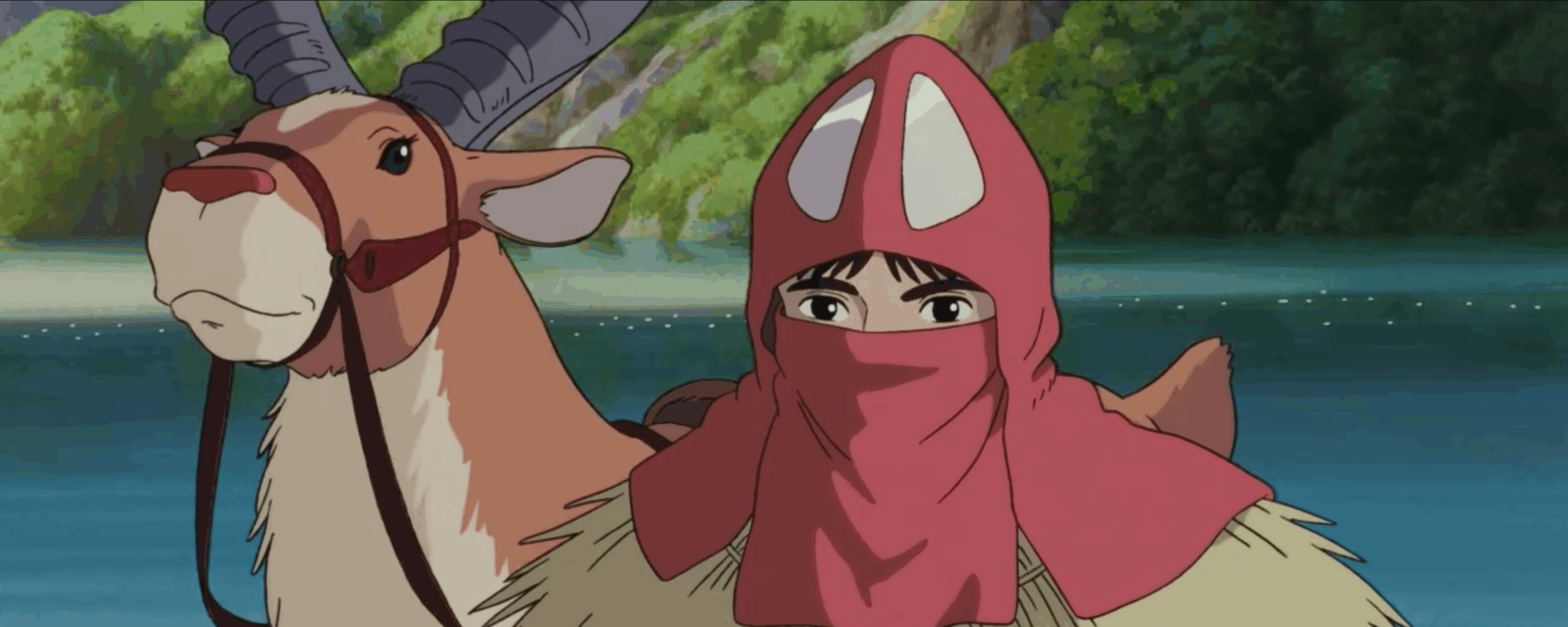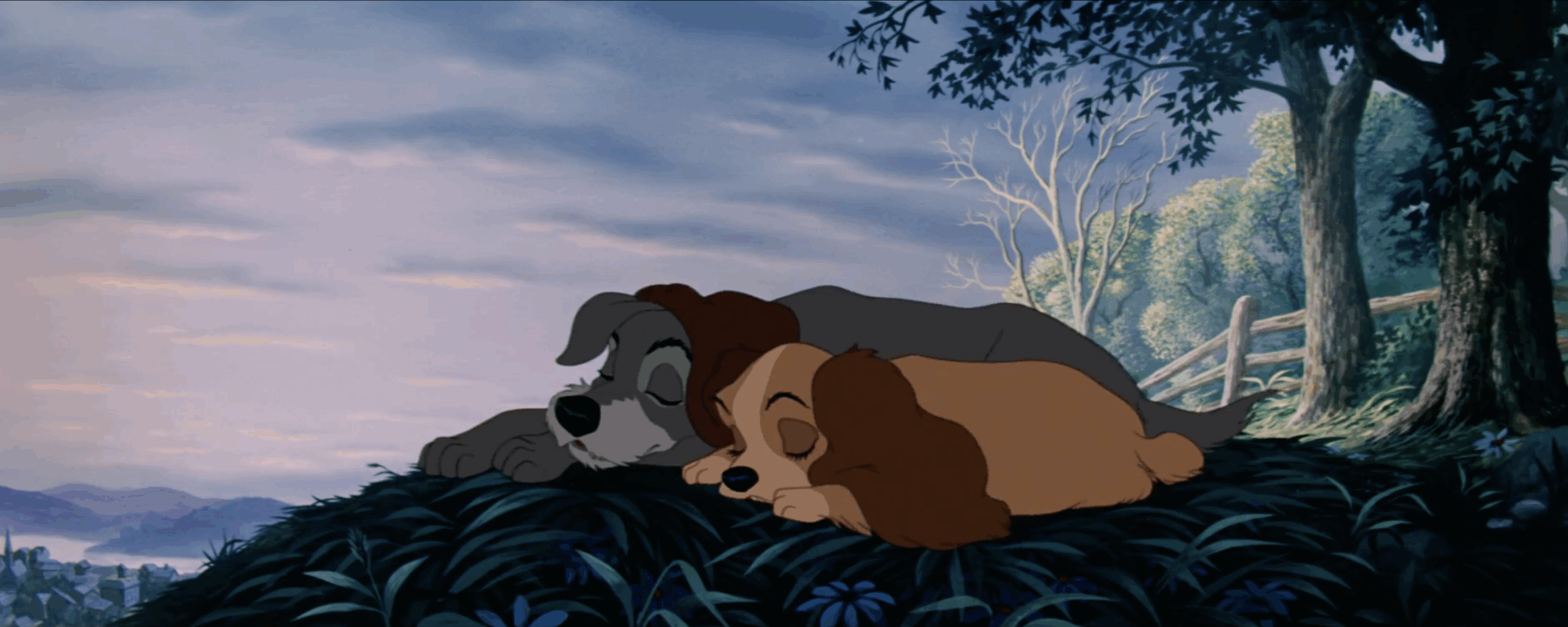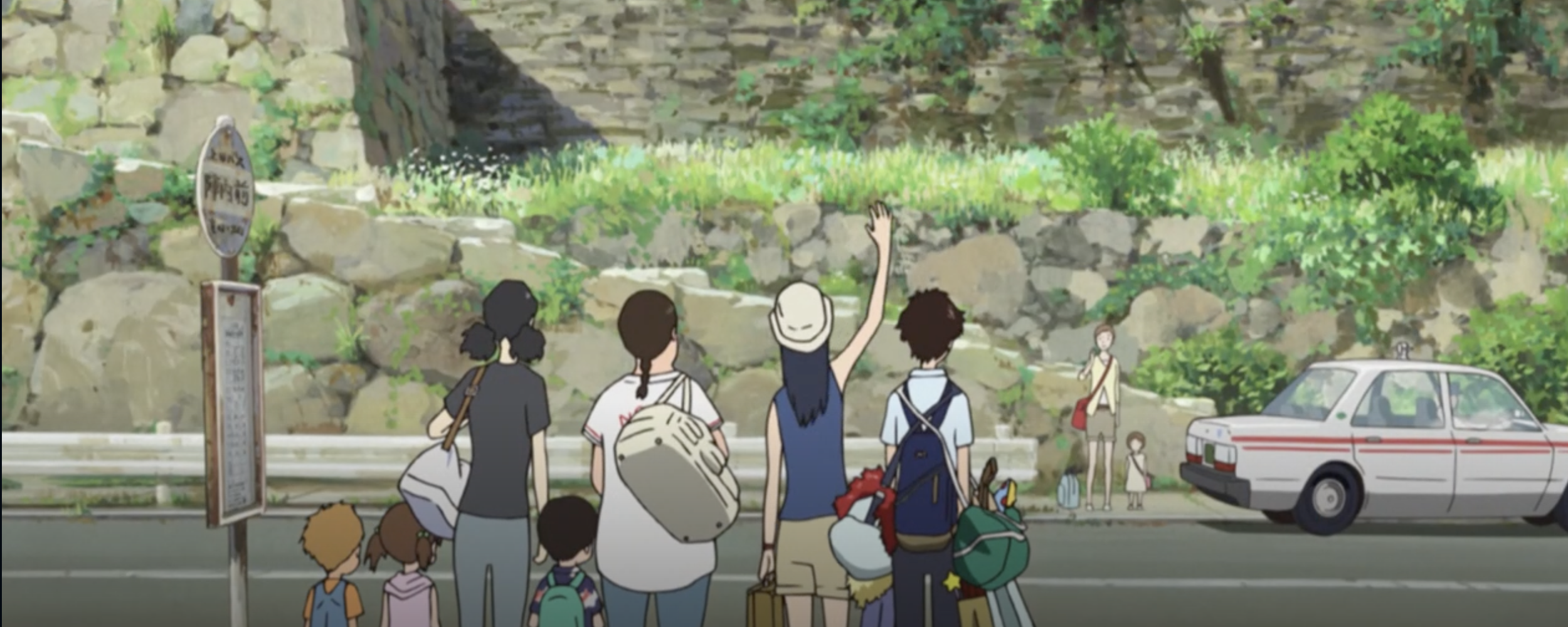This year marks the 40th anniversary of Studio Ghibli, and in line with this there has been a rerelease of Princess Mononoke (Miyazaki, 1997) in cinemas. It is such a great film and to be able to watch it on the big screen is so important to a film like this where visual spectacle is at the heart of it. It combines all the elements that make Studio Ghibli great into one film.
The film sets itself in the forest, and throughout this is where it remains. The detail in the visuals is what gives the film so much depth and why setting the film outside throughout drives the story. It is a wide open space where all the animal inhabitants are free to roam, and the audience is free to take in the landscapes. This plays in contrast to the human inhabitants where their settlement feels enclosed and claustrophobic. The use of sound gives the outside world this depth as well. You hear the sound of a stream of water flowing down the river throughout. Most importantly, you hear it when Ashitaka (the main lead) is saved by the God of the forest early on. It signifies life and the energy that it brings with it, it is the life vessel that keeps the forest going. The film can still be silent when it needs to be, arrows being fired through the air bring minimal sound and without a score in the background in some moments of battle it creates an unknowingness and ambiguity that only the forest could bring.
It brings with it the depth in landscape as it does with its narrative. There isn’t so much good against evil but more preservation of the spirit of the land. Spirit is key to this, its what unites the animals with each other and is the way in which they communicate. Whereas the humans aren’t open to any lines of communication apart from with themselves. They are the ones that live in fear, leading them to kill the God of the forest and try eradicate death but this is to their own detriment. As an audience you are positioned from Ashitaka’s perspective who tries to sew a divided forest and bring harmony to the land. Just like the evil that has infested his arm with his personal struggles, he is unable to quash the evil infested in the forest. Having his perspective is key to the distance from good against evil because he finds the humanity in their human settlement and tries to prevent any retribution from the animals.
The film is great for the fact that it has a complex storyline which reflects the intricate nature that it is set within, it also brings a depth that can only be achieved from this environment. More than anything I just enjoy the way the film flows to it and the journey you go on with the main character. You follow him on this personal journey to solve his own evils within him, and also restore the whole forest from evils.


